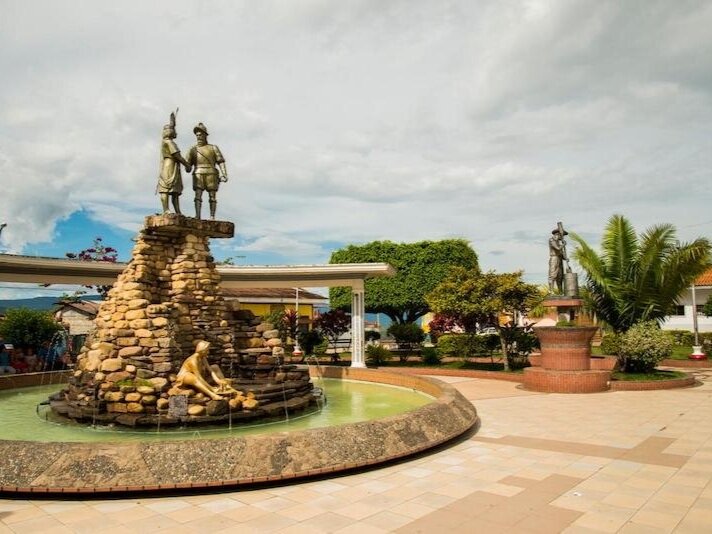A Guide To Tarapoto
Tarapoto is the gateway to northern Peru's high jungle region. Located in the Department of San Martin, it is not the regional capital (as this is Moyobamba), but is the largest and fastest-growing town, with over 100,000 friendly inhabitants.
It has the main airport in the area, with regular flights to/from Lima and Iquitos.
Tarapoto is situated at an altitude of 356m (1,168ft) on the Shilcayo River and the climate is hot and humid.
‘Historical’ statues in Lamas.
History of Tarapoto:
The city of Tarapoto was founded on Aug 20, 1782, a date commemorated by a week-long annual fiesta.
During the 1970s and 1980s, Tarapoto became a haven for terrorists and drug runners, giving the city a reputation for danger.
This was brought firmly under control during Fujimori’s presidency of the 1990s, and the only danger you are likely to experience these days is dodging the countless mototaxis circling the central streets!
Attractions of Tarapoto:
Whereas Moyobamba is the delicate city of orchids, Tarapoto robustly calls itself ‘the City of Palm Trees’.
Certainly, the surrounding countryside, about 300m (1,000ft) lower than Moyobamba, is lush with palms and many other rainforest trees growing in the convoluted landscape of the last and lowest Andean foothills before the flatlands of the Amazon.
The beautiful surroundings make up for the lack of interesting sights within the city.
Motorboats on Laguna Sauce.
Foremost among the region’s lakes is Laguna Sauce (also called Laguna Azul) 52 km (32 miles) southeast of town. Getting there takes about two hours, and involves crossing the Huallaga River.
Here you will find camping, fishing, canoe rental, and hotel resort facilities, so ideal for a day trip or weekend break.
Only 15 km away from Tarapoto is the village of Lamas, at an altitude of 800m (2,625ft), so it is immediately a little cooler. From here you have a beautiful view over the valley.
Lamas is a charming little village, where you can wander around, visit the museum and handicrafts shops and learn more about the indigenous quechua-lamistas.
Pucayaquillo Waterfall near Tarapoto.
Tarapoto is surrounded by dozens of named waterfalls: the best known is Cataratas de Ahuashiyacu, about 14 km (9 miles) north, on the road to Yurimaguas.
Nearby Laguna Venecia is a popular place for a swim and the two sites are often visited together.
White-water rafting and canoeing is offered on the Mayo River all year round, and the lower reaches of the Huallaga River from June to October. Other adventure activities include zip-lining, abseiling and caving.
Chocolate in Tarapoto:
Harvesting cacao pods in Chasuta.
As the cultivation of coca leaf around Tarapoto has declined markedly, the farming of cacao, the raw material of chocolate, has really taken off as a replacement crop. It is now a base of the region’s economy.
Chocophiles can learn about the chocolate-making process - with samples! - by visiting a cacao plantation, such as in Chasuta, and/or Las Orquideas Chocolate Factory in Tarapoto city.
How to Visit Tarapoto:
With its warm climate, welcoming geography and abundant flora and fauna, Tarapoto is a fine destination in its own right; while its well-served airport means that it serves as a hub for many of Peru North's overland tours into Amazonas and beyond:
And given the excellent birdwatching opportunities in the area, it is no surprise that Tarapoto features in a number of our birding tours:
A Quechua-Lamista lady hand-painting pottery in the village of Lamas.






